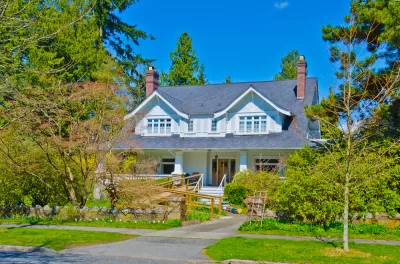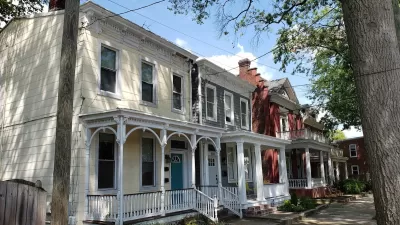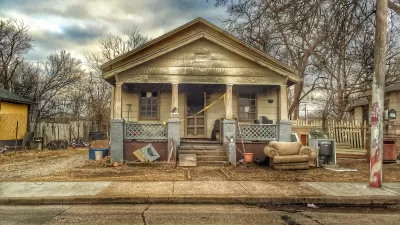U.S. home values appreciated sharply during the pandemic, particularly in communities of color, where prices rose by as much as 10.3%.

Thanks to "historically low interest rates, strong demand, and the tightest supply conditions seen in 40 years," home prices "rose significantly" across the United States over the last year. "From December 2019 to 2020, nominal home values increased in 92 percent of the 30,000 zip codes tracked by Zillow (which contain 99 percent of the nation’s population)." This growth, write Alexander Hermann and Thomas Shay Hill in Housing Perspectives, was particularly pronounced in communities of color, where home value growth "outpaced less diverse zip codes."
According to research conducted by Hermann and Hill, "Typical home values in December rose 9.3 percent on average in communities of color—including 10.3 percent in zip codes where a majority of the population is Black—compared with 6.6 percent in neighborhoods where at least 90 percent of the population is white." In major cities, these neighborhoods "tend to have higher-than-average population densities, lower median incomes, lower home values, and a lower rate of homeownership than the metro area as a whole," characteristics which correlate with home price growth.
Yet "[d]espite faster average growth, home prices continued to decline in a disproportionate share of these zip codes. Looking ahead, both stagnating home prices and extreme price volatility might compound the challenges faced by communities of color, and Black communities in particular, in building wealth."
FULL STORY: Home Prices Rose Fastest in Communities of Color During the Pandemic

Planetizen Federal Action Tracker
A weekly monitor of how Trump’s orders and actions are impacting planners and planning in America.

Congressman Proposes Bill to Rename DC Metro “Trump Train”
The Make Autorail Great Again Act would withhold federal funding to the system until the Washington Metropolitan Area Transit Authority (WMATA), rebrands as the Washington Metropolitan Authority for Greater Access (WMAGA).

The Simple Legislative Tool Transforming Vacant Downtowns
In California, Michigan and Georgia, an easy win is bringing dollars — and delight — back to city centers.

The States Losing Rural Delivery Rooms at an Alarming Pace
In some states, as few as 9% of rural hospitals still deliver babies. As a result, rising pre-term births, no adequate pre-term care and "harrowing" close calls are a growing reality.

The Small South Asian Republic Going all in on EVs
Thanks to one simple policy change less than five years ago, 65% of new cars in this Himalayan country are now electric.

DC Backpedals on Bike Lane Protection, Swaps Barriers for Paint
Citing aesthetic concerns, the city is removing the concrete barriers and flexposts that once separated Arizona Avenue cyclists from motor vehicles.
Urban Design for Planners 1: Software Tools
This six-course series explores essential urban design concepts using open source software and equips planners with the tools they need to participate fully in the urban design process.
Planning for Universal Design
Learn the tools for implementing Universal Design in planning regulations.
Smith Gee Studio
City of Charlotte
City of Camden Redevelopment Agency
City of Astoria
Transportation Research & Education Center (TREC) at Portland State University
US High Speed Rail Association
City of Camden Redevelopment Agency
Municipality of Princeton (NJ)





























